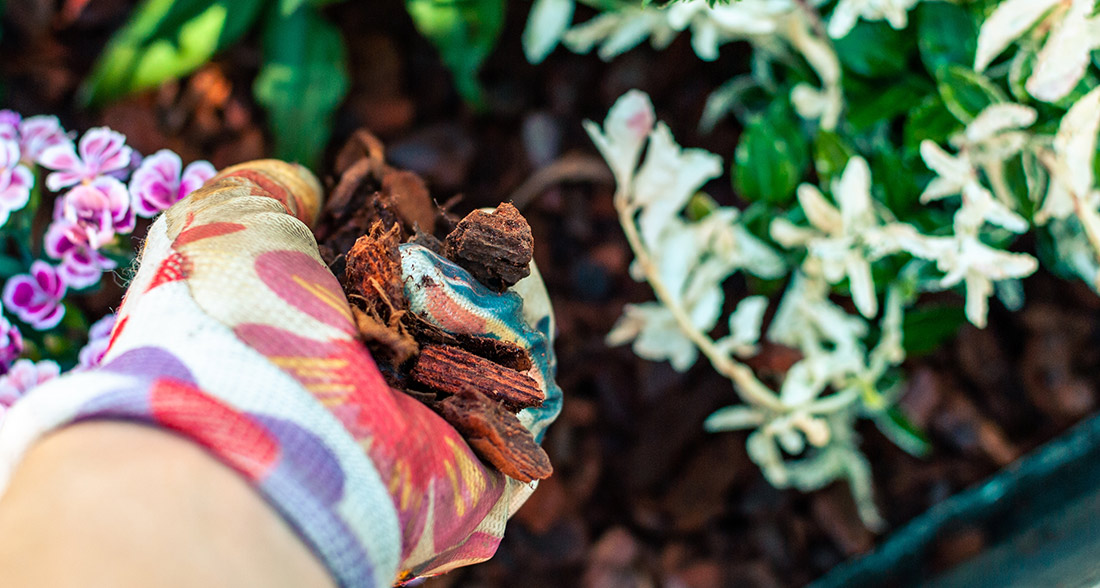
The word MULCH has its origins in the 1650s, probably from the Middle English noun, molsh, meaning “soft or moist”. It is simply a protective ground covering that prevents erosion, controls weeds, saves water, reduces evaporation, promotes better root growth, and, if organic in nature, it also enriches the soil as it decays. Mulch can reduce rain splash and runoff, especially if planted on an incline. Its insulating quality helps keep the soil warmer in the winter and cooler in the summer. The most popular mulches are bark, pine needles, straw and leaves, and composted materials. With so many beneficial properties, it is no wonder so many horticulturists recommend its use.
Mulch comes in a wide range of colors and textures and, when added uniformly to a landscaped area, serves much the same aesthetic purpose as a carpet in a home. Spread the mulch in a thickness of 2-4 inches on plant beds, and loosen it with a rake on a regular basis. New mulch should be added to maintain the 2-4” thickness.
Bark is the most popular and widely available. They come in bags or can often be ordered and delivered bulk. Bark mulch is relatively easy to apply, comes in several natural colors, but some types have a tendency to float away in heavy rains. Pine is the most common, but cypress and redwood are also popular.
Pine Needles make a great mulch, especially for acid-loving plants like azaleas. It is slow to decompose, so it lasts a long time. Avoid using near wood fences or walls due to potential fire hazard.
Leaves are readily available and inexpensive, but work best if shredded before applying as a mulch. Large, unshredded leaves can form an undesirable “mat” which repels water. Partially Decomposed Compost makes an excellent mulch. You can make your own compost or buy it. The lack of uniformity may make it less attractive in exposed areas. Compost may also contain some weed seeds that can be objectionable.
BREW UP SOME “COMPOST TEA”
Take an old sock, some cheesecloth, or even an ugly old pillowcase (if you want to make a large batch) and fill it with finished compost. Close the porous fabric receptacle securely, and immerse it into a properly sized container of water. Allow it to “perk” for 24 hours until it has the appearance of strong coffee. Dilute it to the color of weak tea when you use it to water your plants…they will LOVE it!